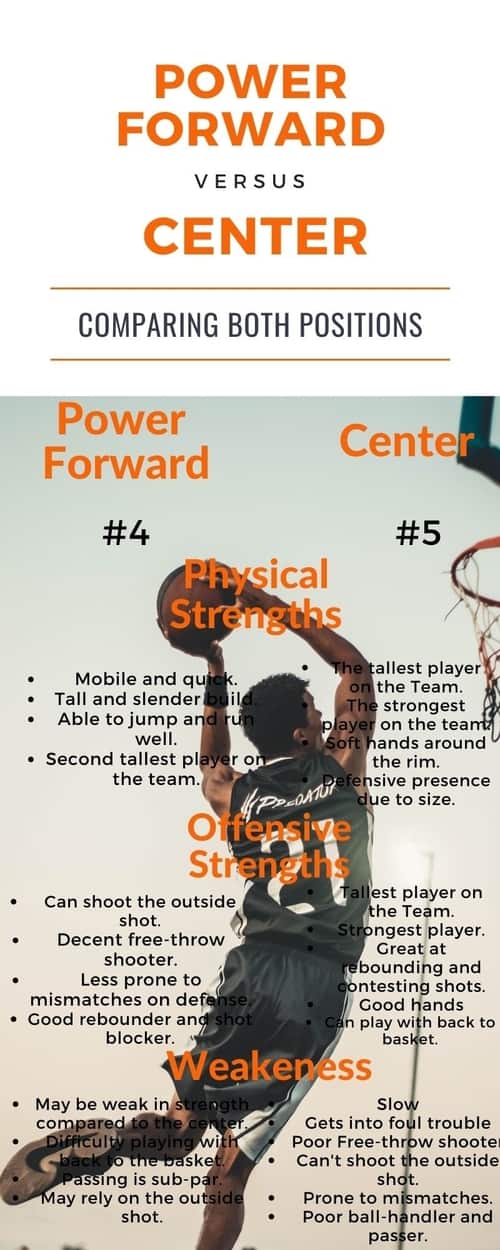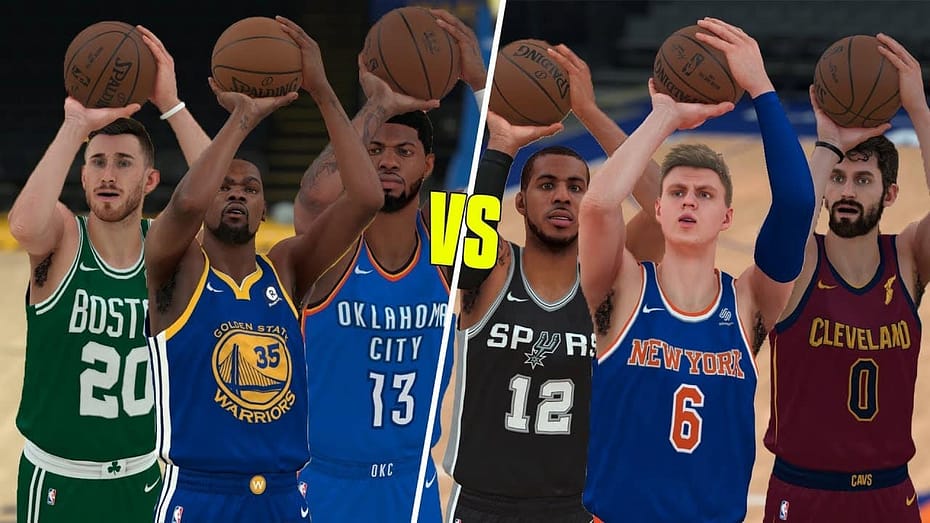When it comes to basketball, there are two main types of forwards: the power forward and the small forward. Both have their own strengths and weaknesses, so it’s important to know which one is right for you. Here’s a look at the difference between power forwards and small forwards:
The power forward is usually the bigger and stronger player on the court. They’re responsible for playing close to the basket and scoring points in the paint. Power forwards are also typically good rebounders.
Small forwards are often referred to as “wing players.” They tend to be quicker and more agile than power forwards, making them better suited for playing on the perimeter. Small forwards typically shoot more from outside than inside, and they also tend to rack up more assists than power forwards.
The power forward and small forward are two of the five positions in basketball. They are often confused with one another, but there are some key differences between the two. The power forward is usually the bigger and stronger of the two, and they typically play closer to the basket.
Difference Between Small Forward and Power Forward
What is the Difference between a Small Forward And a Power Forward?
In basketball, the small forward (SF), also known as the three, is one of the five positions in a regulation game. Small forwards are typically shorter, quicker, and leaner than power forwards and centers. The small forward position is considered to be perhaps the most versatile of the five main basketball positions.
The power forward (PF), also known as the four, is one of the five positions in a regulation game. Power forwards are usually taller than centersthey often play a role similar to that of an center on offensereboundingopposing players shotsand blocking shots .
Is Small Forward the Hardest Position?
No definitive answer exists to this question as it depends on a number of individual factors. However, small forward is generally considered to be one of the more difficult positions in basketball due to the high level of athleticism and skills required. A successful small forward must be able to shoot, dribble, pass and defend at a high level, while also being quick and athletic enough to get by their matchup.
While there are some players who have all of these skills naturally, most have to put in a lot of hard work and dedication to master them.
What is the Role of a Power Forward?
In basketball, the power forward (PF), also known as the four, is a position. Power forwards play a role similar to that of center. They typically score points by playing close to the basket and often set up plays by passing the ball out to the perimeter shooters or making cuts to the basket following a pass.
On defense, they are responsible for blocking shots and defending against drives to the basket. They also usually grab more rebounds than players at other positions because they are closer to the basket.
The power forward position is considered one of the most important positions in basketball because it requires a unique combination of size, strength, speed, agility, and shooting ability.
Is Point Forward the Same As Power Forward?
In basketball, the power forward (PF), also known as the four, is a position. Power forwards play a role similar to that of center. They typically score points by playing close to the basket and often rely on offensive rebounds to put back missed shots.
On defense, they are expected to help defend the paint area against opposing big men and block shots. Power forwards tend to be more athletic than centers and often have good mid-range jump shots. Many power forwards are also adept at driving to the hoop and finishing with either a layup or dunk.
Point forward is not a position in basketball. The term is sometimes used informally to describe a player who handles the ball like a point guard but plays primarily at small forward or power forward.

Credit: basketballword.com
Power Forward in Basketball
The power forward is a position in basketball. A power forward is typically bigger and stronger than the other players on the court and is responsible for rebounding, playing defense, and scoring inside the paint.
The power forward position was created in the late 1950s as a way to counter the dominance of centers like George Mikan.
The idea was to have a big, strong player who could rebound and score close to the basket, but also had the athleticism to run the floor and defend smaller players.
Today, power forwards are still big and strong, but they are also expected to be able handle the ball like a guard and shoot from outside the paint. The best power forwards in the NBA today are versatile players who can do it all on both ends of the court.
Some of the best power forwards in NBA history include Karl Malone, Tim Duncan, Kevin Garnett, Barkley, Dirk Nowitzki, Kevin McHale, Moses Malone, Elvin Hayes, Charles Oakley, and Dennis Rodman. These players were all excellent rebounders and defenders with an ability to score inside and out.
Conclusion
In basketball, the power forward (PF) and small forward (SF) are often confused. They are similar in many ways but have some key differences. The power forward is usually the bigger and stronger of the two, while the small forward is generally quicker and more agile.
The power forward typically plays a more physical game, using his size and strength to battle for position inside the paint. He is also responsible for much of the team’s rebounding. On offense, the power forward looks to score close to the basket or from mid-range jumpers.
The small forward is often asked to do a bit of everything on the court. He may be called upon to defend the opposing team’s best player, as well as score points and grab rebounds. On offense, he may be asked to shoot threes or take it to the basket.
Small forwards must have a good all-around game if they want to be successful at this level.
Emma, the founder of The Info Book, started with a passion for Blogging in 2013. She has continued her passion for Blogging and desire to improve her skills and wanted to share her journey and helpful knowledge with other like-minded individuals.
She launched The Info Book as an outlet for those interested in learning more about topics like automotive, sports in hopes that other’s can take what she learn and apply it for themselves!
